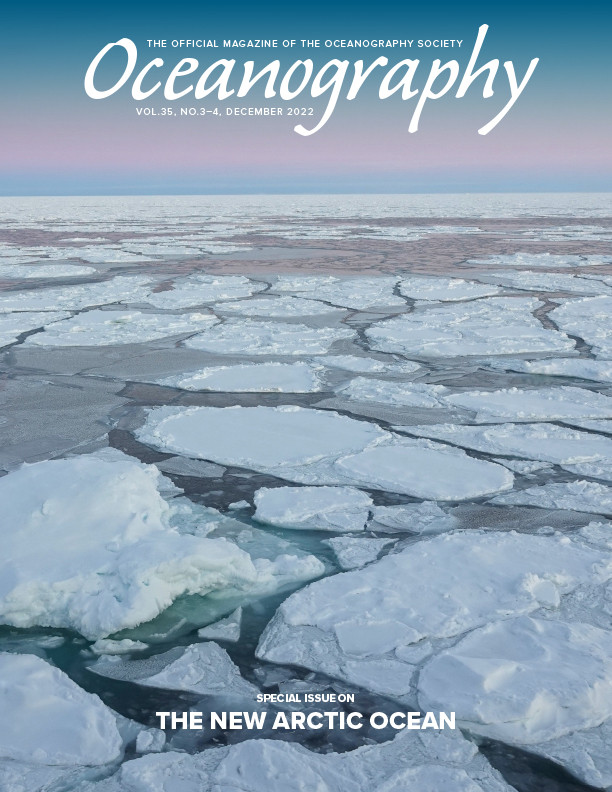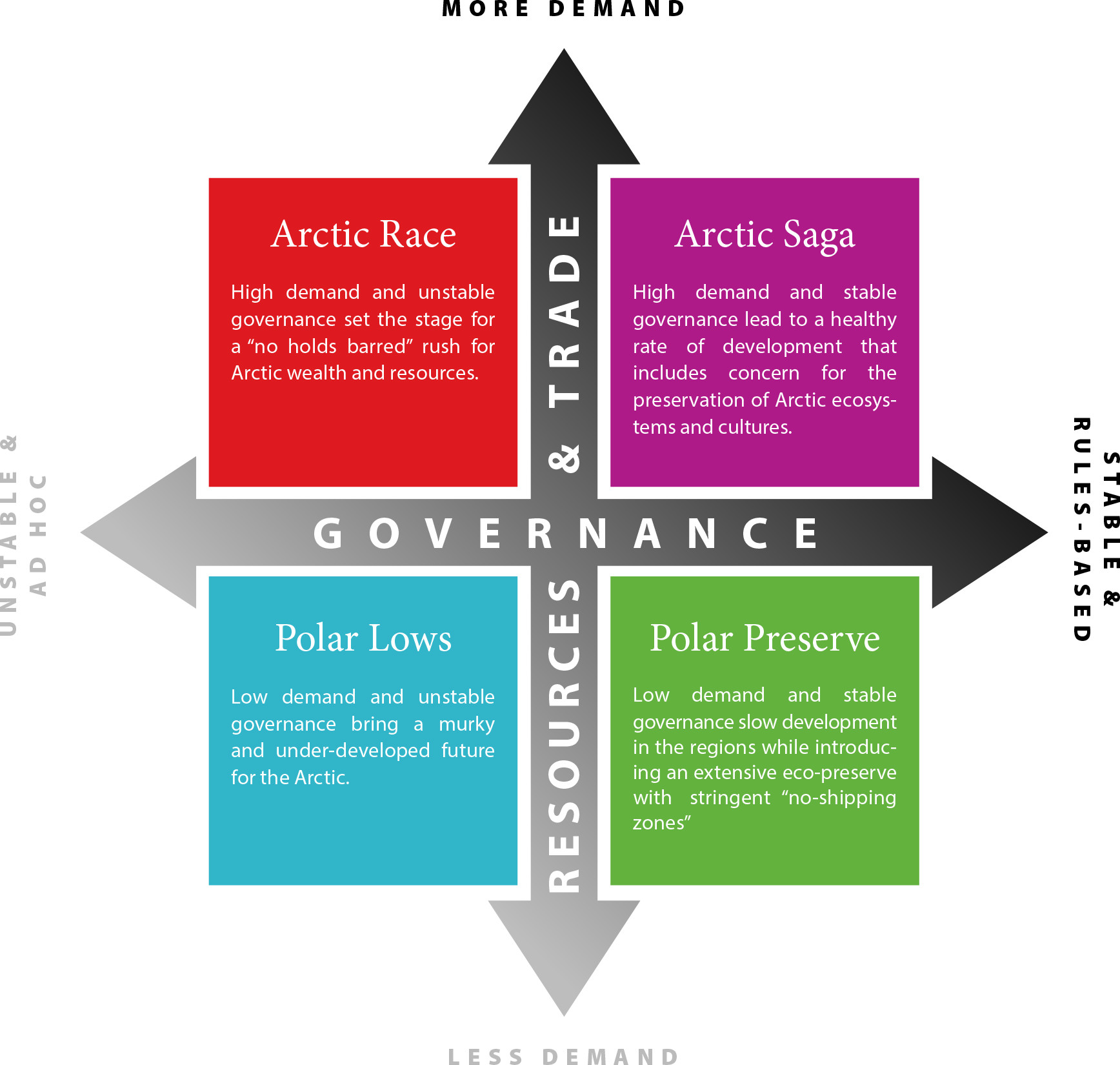Full Text
Many uncertainties and a complex suite of drivers of change are influencing the future of Arctic marine operations and commercial shipping. Most notably, the well-documented reduction of Arctic sea ice extent and thickness and the transition from thick, multi-year to seasonal, first-year ice are profound responses to anthropogenic climate change. The Arctic Ocean is becoming more navigable, with greater marine access now attained in most regions. The possibilities for longer seasons of marine navigation during spring, summer, and autumn are real, but the vision of new, year-round (routine) Arctic shipping that could alter global trade routes remains highly implausible. Arctic shipping remains largely destinational, with ships traveling into the Arctic Ocean to conduct an economic activity (Lasserre, 2019).
Significant progress has been made during the past decade as researchers have analyzed the output of advanced Arctic sea ice simulations (from global climate models) and then quantified what the projected ice covers mean for marine access and longer navigation seasons. In addition, as marine areas become partially ice-covered for longer periods of time, a practical ship navigation issue has emerged: a more mobile and dynamic ice cover will likely create unforeseen challenges (e.g., more frequent ice ridging) to safe, efficient, and more economically viable ship transits.
A key strategy for evaluating the future of Arctic marine use is to take a more holistic and high-level view of the many factors, or drivers of change, beyond the profound changes in Arctic sea ice that will determine the plausibility of future destinational and trans-Arctic voyages. Three influential drivers are critical to better understanding this future: (1) the economic viability and pace of Arctic natural resource developments and their connections to global commodity pricing and markets; (2) the complex economics and the array of stakeholders within the global shipping enterprise—including ship owners, flag states, ship classification societies, and the marine insurance industry; “just-in-time” container cargoes or bulk commodity cargoes that can be stockpiled and shipped seasonally; shipbuilding and advanced technologies; available marine infrastructure to support trade and operations along shipping routes; and other economic challenges such as long-term ship financing unique to global shipping; and (3) international governance and Arctic national regulations for ship operations throughout the Arctic Ocean—including the United Nations Convention on the Law of the Sea, UNCLOS, as the legal framework for the Arctic Ocean; the International Maritime Organization’s mandatory rules and regulations for ships operating in polar waters (the IMO Polar Code); and special regulations for ships operating along Russia’s Northern Sea Route and within the waters of the Canadian Arctic (Brigham, 2021). The current and unforeseen war in Ukraine should be considered a wildcard and a highly disruptive geopolitical event that has changed the calculus for Arctic state cooperation and future economic development in the region.
The plausible future scenarios presented in the Arctic Council’s Arctic Marine Shipping Assessment (AMSA) released in April 2009 revealed the complexity and challenges of fully understanding the future of Arctic marine navigation. The process of creating the AMSA scenarios identified a suite of uncertainties or influential drivers of change bounded by two major factors that formed the axes in a four-scenarios matrix: resources and trade (the level of demand for Arctic natural resources and trade) and governance (the degree of relative stability of rules for marine use both within the Arctic and internationally). The four AMSA scenarios, a set of stories developed around carefully written plots using many of the more than 120 uncertainties uncovered in AMSA’s strategic discussions, include Arctic Race, Arctic Saga, Polar Lows, and Polar Preserve (Arctic Council, 2009; Figure 1).
|
|
Importantly, the AMSA scenarios workshops revealed a host of uncertainties that included influential and broad drivers such as a stable legal climate or framework, global oil prices, new Arctic resource discoveries, limited or seasonal windows of Arctic marine operations that impact the economic viability of Arctic shipping, a major Arctic shipping disaster, rapid climate change and climate change becoming more disruptive sooner, the safety of other global trade routes, Arctic route transit fees, new global agreements on polar ship construction rules and standards, the escalation of Arctic maritime disputes, conflicts between Indigenous and commercial use in Arctic waters, Arctic maritime enforcement efforts, and the entry of new maritime nations (China, Japan, and South Korea) to Arctic shipping (Arctic Council, 2009). There is little doubt the most valuable outcome of the AMSA scenarios work was to identify the great complexity and inherent range of global factors that can influence the future of Arctic marine operations and shipping.
Future research regarding Arctic marine navigation must address this fundamental issue of complexity and focus on interdisciplinary approaches. A full range of influential factors, many global and foremost among them economic drivers (as well as climate change, governance, social impact, geopolitics, and many others), need to be integrated with any research strategy and framework. Examples of key questions and potential research topics include:
- Given that sea ice thickness is one of the most important factors in ice navigation, how can new ice thickness observations and sea ice maps assembled from satellite observations, coupled with Polar Class ship capabilities, be used to determine Arctic marine access and assess longer seasons of navigation?
- How will the IMO Polar Code impact the overall economics and operations of future Arctic commercial ships?
- What is the potential for public-private partnerships (between public institutions and the global maritime industry) to invest in Arctic marine infrastructure that supports regional economic development, improves marine safety, and enhances environmental protection?
- How has the war in Ukraine impacted Arctic economic development, international cooperation in Arctic maritime affairs, and future Arctic marine transportation systems?
- What scenarios for bulk shipping in the Arctic Ocean—along the Northeast Passage, the Northwest Passage, and routes across the Central Arctic Ocean—can be developed to identify economically viable seasons of navigation in future decades?
- What are the near-term and long-term futures of shipping coal, oil, and liquefied natural gas out of the Arctic to global markets?
Despite the extraordinary retreat of sea ice and the increase in Arctic Ocean marine access, the future of marine operations at the top of the world remains highly uncertain. A complex mix of factors, including key economic drivers, and the feasibility of Arctic cooperation will determine the future viability of Arctic ship navigation.


